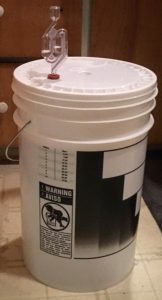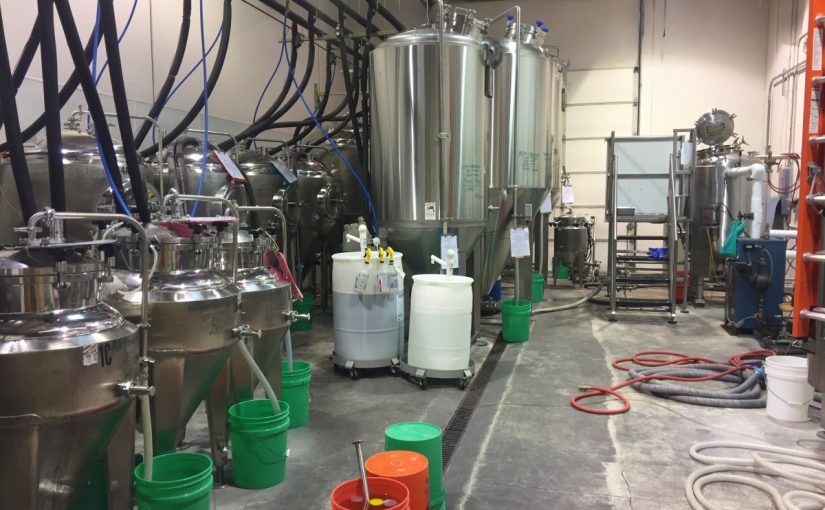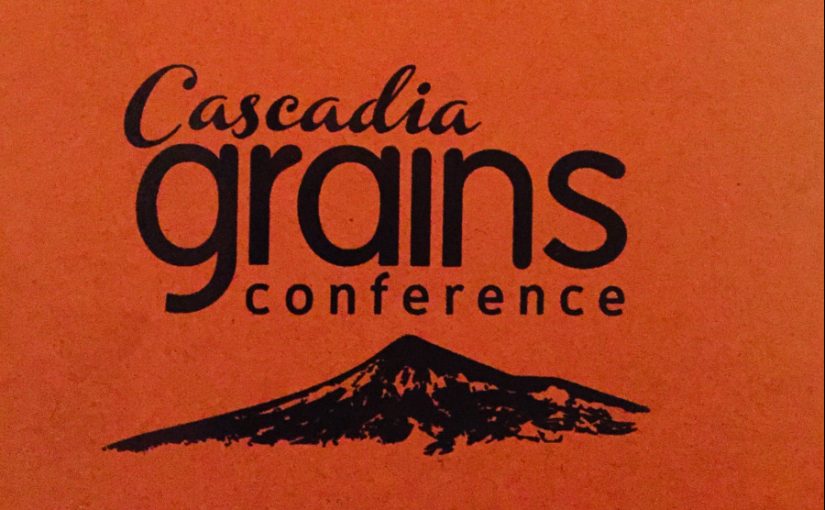Being a self-sufficent home brewer is certainly feasible. The first, and most substantial necessity is land. Only about a half an acre of unused, sunny, flat ground is needed to grow the ingredients for twenty 10 gallon batches of beer. In addition to land, a small grain sprouting machine, and hop/grain kiln are needed (homemade plans for these in an earlier posting).
Category: Project Weekly
Understanding Yeast
Yeast is key to fermentation, and the reason why everyone doesn’t sit around drinking malted barley water or grape juice during times of leisure.
Yeast is a eukaryotic, single cell fungi. It is very much alive and reproduces asexually through the process of budding. A bulge is formed on the membrane of a cell, then the cell divides mitotically, detaching and creating an exact replica of the original cell. A yeast cell is around 5 to 10 microns thick, which is about 5 times the size of average bacteria.
Batch #2, All Grain IPA, My own Recipe
Since the last batch of beer (and first ever) that I brewed I have had significant time to research and determine what I want out of the finished product, and how to achieve that. The first beer I made was a simple recipe using malt extract. It was a mixture of malt extract syrup (6lbs Pilsen), dried malt extract (1lb pilsen), and about a pound of crushed barley to steep for flavor and color. Also this first recipe used only 3 ounces of hops, all the same variety (Chinook). It was an easy recipe and a good baseline for comprehending the fermenting process. At the start of the first brew I did not fully understand hop characteristics, or the importance of a proper grain bill. As I learned the intricacies of brewing I realized my mistakes from the first batch, and gained a great deal of knowledge for success in the next brew.
Malting Grains and Drying Hops
Malting is the process of sprouting a grain to allow it to reach its maximum enzymatic levels, then kilning it at a low temperature to preserve the enzymes until needed. In addition to grains, other seeds like buckwheat can be malted, and also beans if desired. Barley is the standard grain to malt mainly for its high level of enzymes that promote an easy starch-to-sugar conversion during mashing. Many people have been experimenting with using millet as a base malt, and getting great results. Alternative malting is extremely beneficial for those with gluten intolerances, and will soon be a lucrative market.
Water Chemistry and the Terroir of Water
Water is the most plenteous ingredient in brewing beer, and can change the overall flavor of the finished product depending on what minerals are present in it. Beer styles have developed diversely around the world because of the differences in local water where it is produced. It can be compared to how bagels and pizza are generally better around New York than other places. Or take the motto for Olympia beer: “It’s The Water.” (Im sure they made a decent beer at some point, years ago… maybe)
Final Thoughts for My First Batch, and Moving Forward

I just bottled my first ever batch of beer. I’m glad a used such a simple recipe to begin with; it helped me gain an understanding of the process with little stress. I now have a strong understanding of the brewing process through lectures, books, and conversations with brewers. This baseline batch was necessary to asses my problems and move forward with more complicated recipes.
Continue reading Final Thoughts for My First Batch, and Moving Forward
Cascadia Grains Conference
Attending the Cascadia Grains Conference was an amazing experience. Prior to the conference I was not fully convinced that twelve hours of lectures and panels specifically on grain would be enjoyable; I was wrong. The content of these lectures left me yearning for more knowledge, and the connections made will be lifelong resources in my research.
Before attending any specific session I decided to make a round of the booths set up in the main hall. The first booth that I stopped at was one showing how different large-scale grain farms were implementing no-till systems. This was intriguing on a large scale; these farms were planting directly into previous years straw, similar to my learning on smaller farms. The most interesting booth was one run by the city of Tumwater to revitalize the old Olympia brewery, and turn it into an education and history center. John Doan, city administrator of Tumwater, and Ann Cook, communications manager were working this station. They offered information on the project and asked for support through an internship. (I might soon take them up on this offer) The project to redevelop this landmark will begin with reaching their 6 million dollar goal for funding. The Tumwater Craft Brewing and Distilling Center will offer an incubation space for new brewers and distillers to begin crafting an amazing product. In addition, there will be tasting rooms, a restaurant, museum, laboratory, teaching kitchen, entertainment area, farmers market and more! Through this project they intend to create 662 jobs and provide a community hub for PNW local commerce.
Batch #1
Batch #1: Single Hop Variety Extract Brew
Batch #1 is an extract batch due to the fact that my mash tun was not quite ready.

It is brewed only with one hop variety, which is Chinook. This is the first batch of
beer that I have ever made, so I decided to keep it simple, to understand the process. The next batch will be all-grain, a more advanced recipe, and will either be a black IPA recipe out of my current reading (IPA:Brewing Techniques, Recipes and the Evolution of India Pale Ale by Mitch Steele), or a double IPA.
The Ingredients are as follows:
- 0.75 lbs Belgian Carmel 8 Malted Barley
- 0.25 lbs Breiss Caramel 120 Malted Barley
- 6 lbs Pilsen Malt Syrup
- 1 lb Pilsen DME (dried malt extract)
- 3 oz Chinook Hops
- Safale US-05 Ale dry yeast
Getting Started
Research and development has begun. My current reading is IPA:Brewing Techniques, Recipes and the Evolution of India Pale Ale by Mitch Steele. This book examines the history of India Pale Ale from it’s English roots in the mid 1700’s, to it’s more recent American styles. The IPA has gone through many variations to become what today is most popular style of craft beer in the United States.




